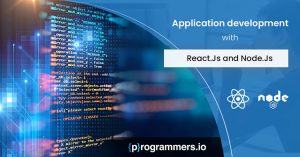Nearly 3.5 billion people worldwide relied on their smartphones last year. If the trends hold, app-based devices including smartphones, tablets and e-readers will become more common than computers. Mobile applications are the norm for more than shopping and social media. Users manage their finances, pay bills, track health and fitness, order groceries, track deliveries, connect to content from libraries and schools, even access services from their local government with apps.There’s an app for everything, and every app should be ultra-responsive. Every app should represent its organization’s brand. Users expect seamless experiences regardless of which device they use: their old or new iPhone, their Android device, even their laptop. Knowing this, organizations should be moving to native apps designed with Flutter or React Native when they hire mobile app developers.
Why native application development?
- Native apps work the best for a specific device because the framework takes advantage of the device’s features. They usually work offline. Programmers use compatible programming languages (Java, C++, etc), and specific frameworks (React Native, Flutter, etc) compatible with device systems.
- Hybrid apps are part native/part web apps. They are usually developed with hybrid frameworks such as Ionic and Angular, they work across iOS or Android devices by rendering a non-native app through a built in HTML browser. They can be larger or perform without the quality of native apps.
- With the power of Flutter and React Native, the old web apps that are HTML web pages made friendly for mobile browsers may begin to fade away. Native mobile app development is just becoming too cost-effective and productive to not to use.
So which should your organization choose for its native mobile app development, Flutter or React Native? First, let’s look at the basics
About Flutter
It came from Google in 2018 and uses Dart, a new coding language that works on both iOS and Android devices. Like React Native, it’s open sourced. It has a smaller base of programmers who know it at this moment, but Dart is similar enough to Java in its construction that the base is expanding rapidly. If trends hold, it may outpace React Native within a year or two. As of 2019, its use for creating apps was on par with React Native. It powers Google Ads, Alibaba (commerce), the Hamilton Musical App, Cryptograph (finance, cryptocurrency), and Watermaniac (health and fitness).
About React Native
It came out of Facebook’s development community in 2015 and uses Java, which has been around since 1991, so it’s ubiquitously known in software programming. It’s quick and easy to find programmers who know the code. React Native is also open-sourced. It powers Facebook Ads, Walmart (commerce), Bloomberg (finance), Instagram, and Soundcloud.
Toe-to-toe comparison flutter vs react native
Which offers the best features?
Flutter: Because it uses one codebase (Dart), which is based off of C/C++, it is closer to machine language. Some programmers feel that it creates a better native app. It doesn’t need a built-in bridge like Java does. It boasts pixel rendering to ensure the user interface looks amazing on both Apple and Android products. Bonus: pixel rendering also reduces device support issues. But, it does not yet offer an API for desktop, which Google is reportedly working on, so some features may not be available yet.
React Native: It is based on the popular JavaScript language, so it too has one primary codebase, though it needs a bridge to interface with non-native elements when it crosses platforms. It’s code is so well-known that it has thousands of third-party libraries from which to draw UI building blocks. However, some of these libraries may be neglected or forgotten. A couple of disadvantages include size and stability. React Native apps can be bigger than native one, and its UI may be fragile.
Which is faster and more cost effective for development and testing?
Flutter:
- It uses one code for all devices which reduces development time.
- Its widget library is larger than React Native. It offers over 1450 packages and the popular Bloc architecture. Its UI widgets out-of-the-box come as Material Block (for Android) and Cupertino (for iOS).
- It supports MVP (minimum viable product) development, so you can see a UI prototype, flesh out your design, and test your market.
- It requires 50% less testing than hybrid apps.
- Flutter uses “Stateful Hot Reload” for faster development. This feature allows developers to view the most recent edits or fixes of the app without harming the current state
React Native:
- Application components are compiled in native equivalents instead of one native code. Java runs a thread to communicate with native modules. It’s far faster than a hybrid app.
- React Native’s components out of the box are not as numerous, though some are adaptive. They can figure out which platform they are running on and render themselves for best performance on that platform.
- As previously mentioned there is a robust community of third-party libraries, and the code allows for re-use.
- Like Flutter, it requires 50% less testing than other mobile app development frameworks.
- It has Hot Reload for fast coding, so development time is cost-effective.
In the end
Obviously, they’re both solid performers. Either may render a perfect app, but trends suggest that techies see the future in Flutter. It’s simple. It’s powerful. It’s more efficient and looks sleeker. Either way, Programmers.io will help you develop the on-demand mobile app that serves your clients, your community, your users the best.




